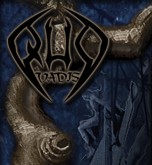In
the previous column we looked at the basic tonal
structure of the opening riffs to Mute Requiem. We
also looked at the reasons why the harmonic
minor scale is often used in metal today.
In this lesson we will look at three additional aspects of the intro to "Point
of No Return: Mute Requiem"
To Triplet or Not to
Triplet
An
interesting point about the opening riffs to Mute
Requiem is that the three note groupings that appear throughout RIFF ONE
(example: the
open E string notes starting in bar 1) could be
interpreted as triplets.
Actually,
they are NOT.
They
are groups of two 16th notes followed
by an 8th. This grouping is seen throughout
the partition. Why is this significant? Well first of
all, even though they sound close to the way a triplet
sounds, they divide the beat equally - as opposed to
triplets where the divisions are asymmetrical [beat/4
vs. beat/3].
Here
is an audio example that illustrates the difference.
This
way of playing the three note groupings gives the riff
it's rolling feeling, which would not be possible to
achieve by using triplets.
Fingering:
In order to switch
smoothly between certain phrases in RIFF TWO, use
fingers 1-3-4-3-1 to do the stretch in bars 18 through
20. Use fingers 1-3-3 in bars 27 through 29 as
indicated on the tab. If you try a different fingering
say 1-3-1 for example you will not be able to play the
transitions smoothly at higher speeds.

